In November 2019, Distant Era photographed Chicago: November 2019, a cyberpunk-and-Blade-Runner-inspired test series that experimented with portraits and scenes of science-fiction subject matter using colored gels and photo composites featuring actors Jacob Bates, Kai Young, Elizabeth MacDougald, and Nathan Pease. Previous entries in the Traveller focused on experiments in compositing, portrait effects, and colored gels using small, battery-powered flash. This time we’ll look at scenes of our android hunters from the previous posts and the challenges of photographing scenes vs. shooting individual portraits.
Portraits vs. Scenes
There are dozens of elements to consider when photographing a portrait, from the camera settings to the lighting to the background to the wardrobe and makeup to the expression and posing. The more you learn, the more tools, techniques, and knowledge you have at your disposal. Scenes are a different animal.
If there are this many elements to consider when photographing an individual portrait featuring a single subject, how many more elements must we consider in a scene featuring two or more subjects? Scenes usually need a setting of some kind, even a minimal one, whereas portraits can get by with an abstract background. In a scene, there is some relationship between the subjects, if only conceptually, or in the mind of the audience. Flat lighting doesn’t carry a scene too well. I’m tempted to say that specificity in lighting is even more important for a scene than for a portrait (in my work anyway) since a scene needs to convey something about the relationship between the characters.
Thinking back on past costumed photography test shoots—for example, going out with friends to a specific location in the city or nature—portraits have generally worked out well, whereas photographs with two or more subjects have felt flat, or off, and generally uninspired, and so I’ve rarely shared those. Until recently, I don’t think I’ve understood why such scenes felt so bland.
Theatrical Photographs
After all, bland scenes have seldom happened when photographing production images in theatre. But I think therein lies the difference: by the time most theatre companies I’ve worked with reach the production stage, the costumes and set are finished and the lighting designer and director have created the mood and the action of the scene. The photograph includes a set, costumes, makeup, mood conveyed by lighting, and dramatic action. That’s the difference.
Photographs don’t have to be full theatrical presentations in order to have these elements, but considering these elements will naturally make for stronger scenes.
The scenes we photographed in this series incorporated such elements better than other scenes I’d photographed previously in test shoots. This was probably due to mood, lighting, and the considerable acting skills of Jacob Bates and Kai Young.
The Scenes
In the first of these two scenes, we see two android hunters at the bar. Jacob’s face is partly in shadow. Kai’s katana and Jacob’s revolve lay out on the bar. They’re drinking. The neon lights spill over them and fill the shadows with color. There’s a distinct mood to the photograph. We shot the scene in different ways. Here you can see an early version of the scene (left) in which Jacob is well lit. In the final version of the scene we edited (right), only half of Kai’s face is illuminated. Jacob is backlit with blue light, his face fully in shadow. The light makes the scene and makes for a more interesting story. Add some color and neon overlays and we arrive at the final edit.
Looking at these photographs again after three years, I wonder whether the shadow on Jacob was intentional. I’d like to imagine I was very deliberate with the light, but that’s probably not the case. Likely the flash simply misfired. Sometimes the mistakes are better. They’re always the ones we learn the most from. In this case, they showed me which was the better image.
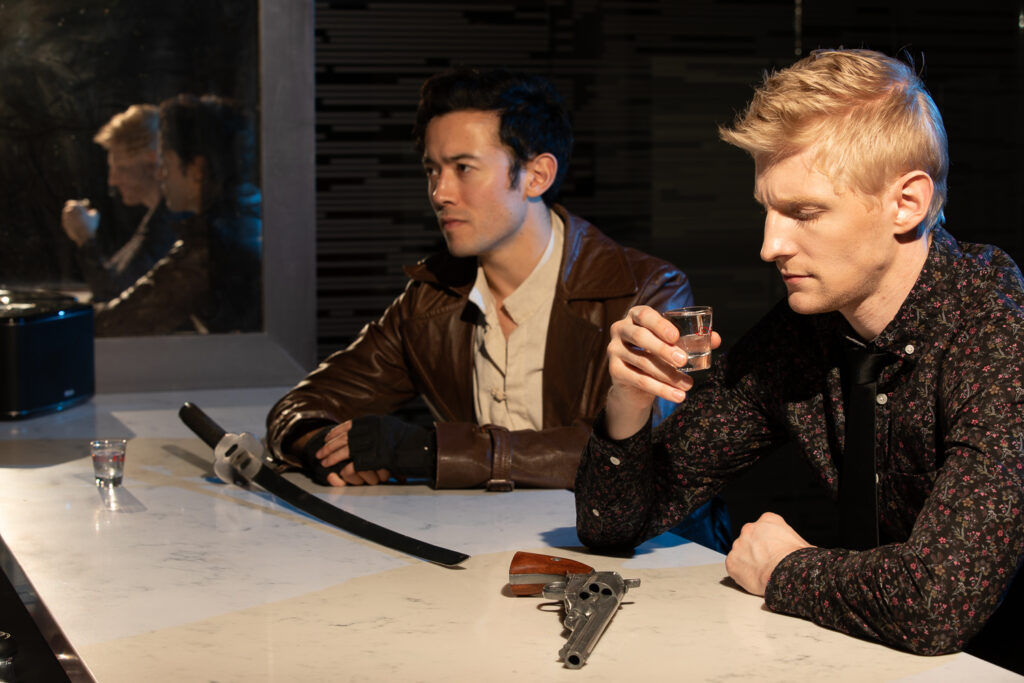
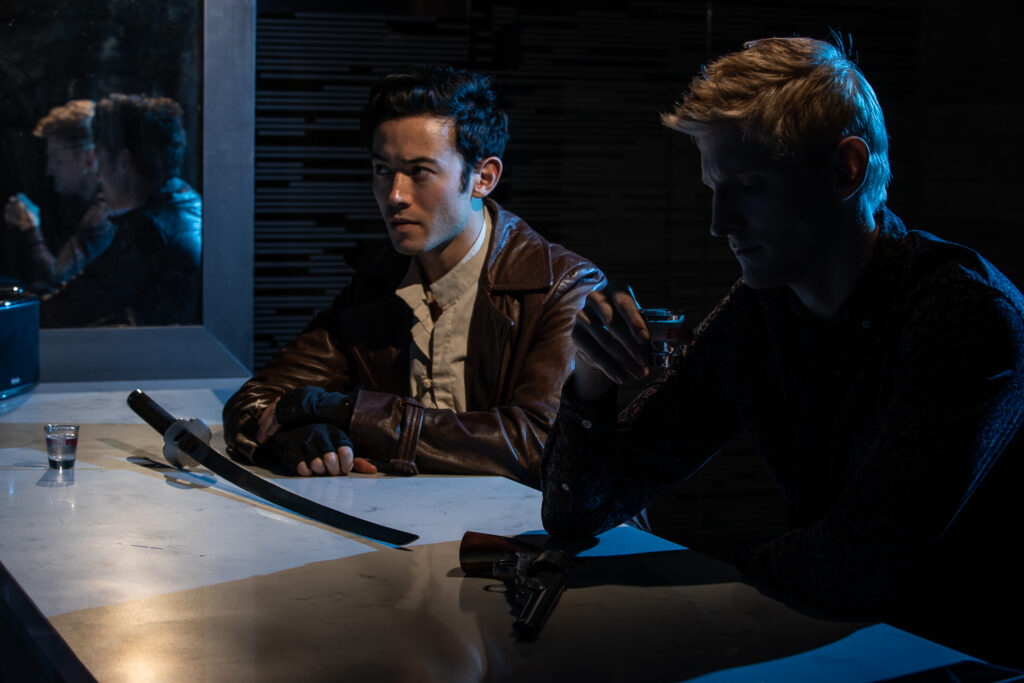
In the second scene, we see the android hunters at odds, the scene a cool night-blue. Is one of them an android? They certainly seem to think so. I originally released this image with significantly more contrast in 2019, but in 2023 I prefer this version, which is very close to what we captured in camera using night-blue gels.
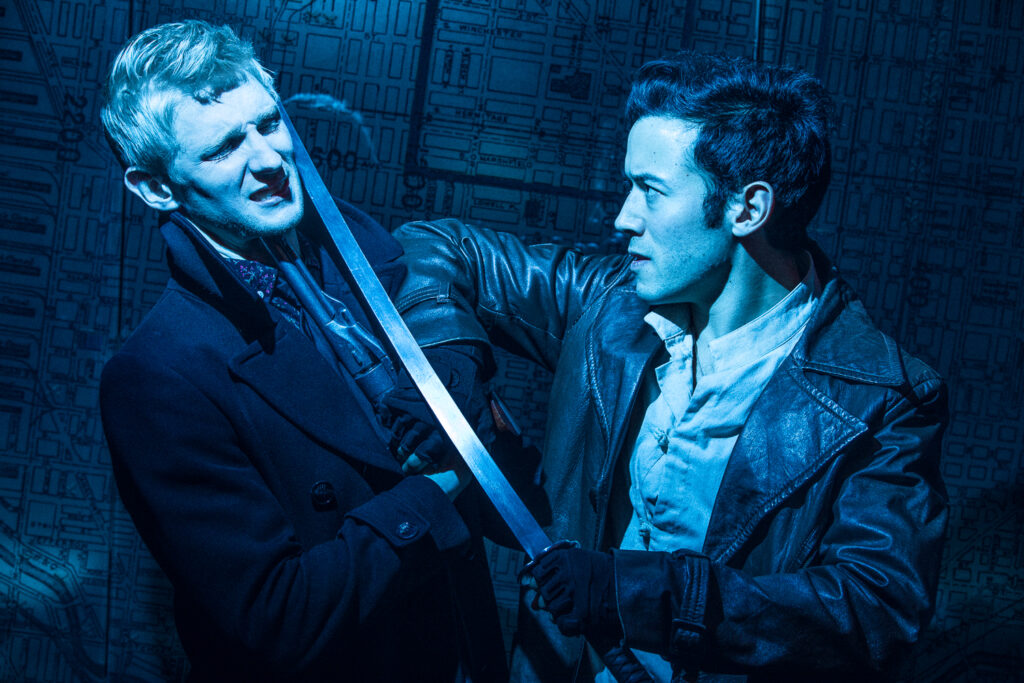
The test series prior to Chicago, November 2019, called Hauntings from a Distant Era, began to explore scene, and this cyberpunk series explored one step further. The next miniseries, The Contract, shot in early pre-pandemic 2020 would take another step in that direction. The pandemic made gathering less safe, so we’ve stepped away from it in favor of portraiture (i.e. The People of Light and Shadow), but for 2023 we’re returning to playing with scene to see how we can advance our storytelling in single-frame photographs.
Next week, we’ll take a look at the androids in the series.
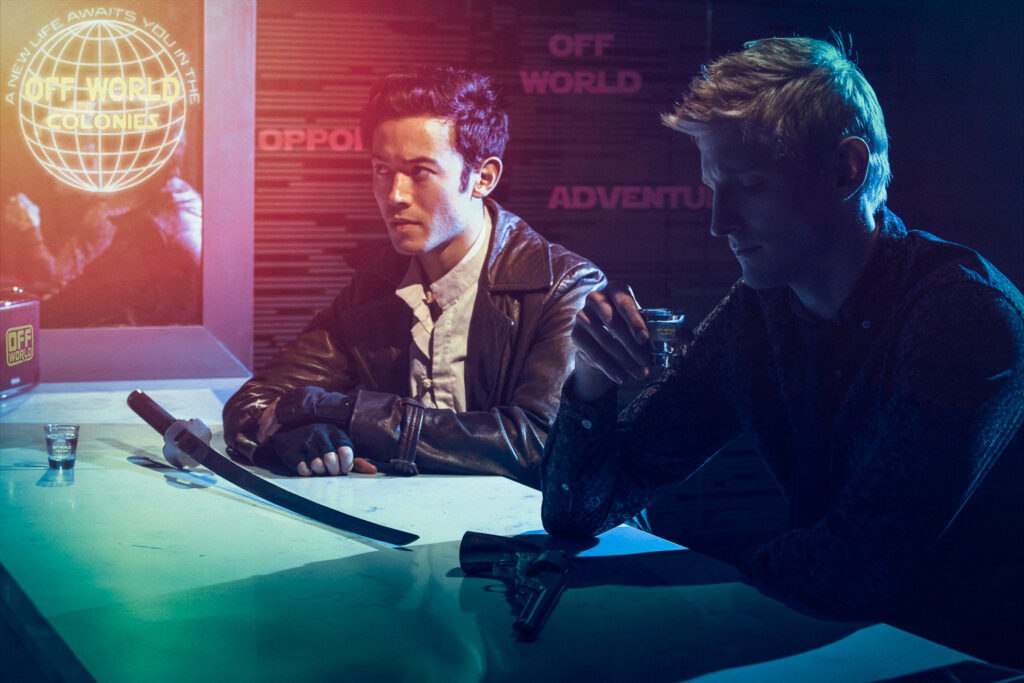

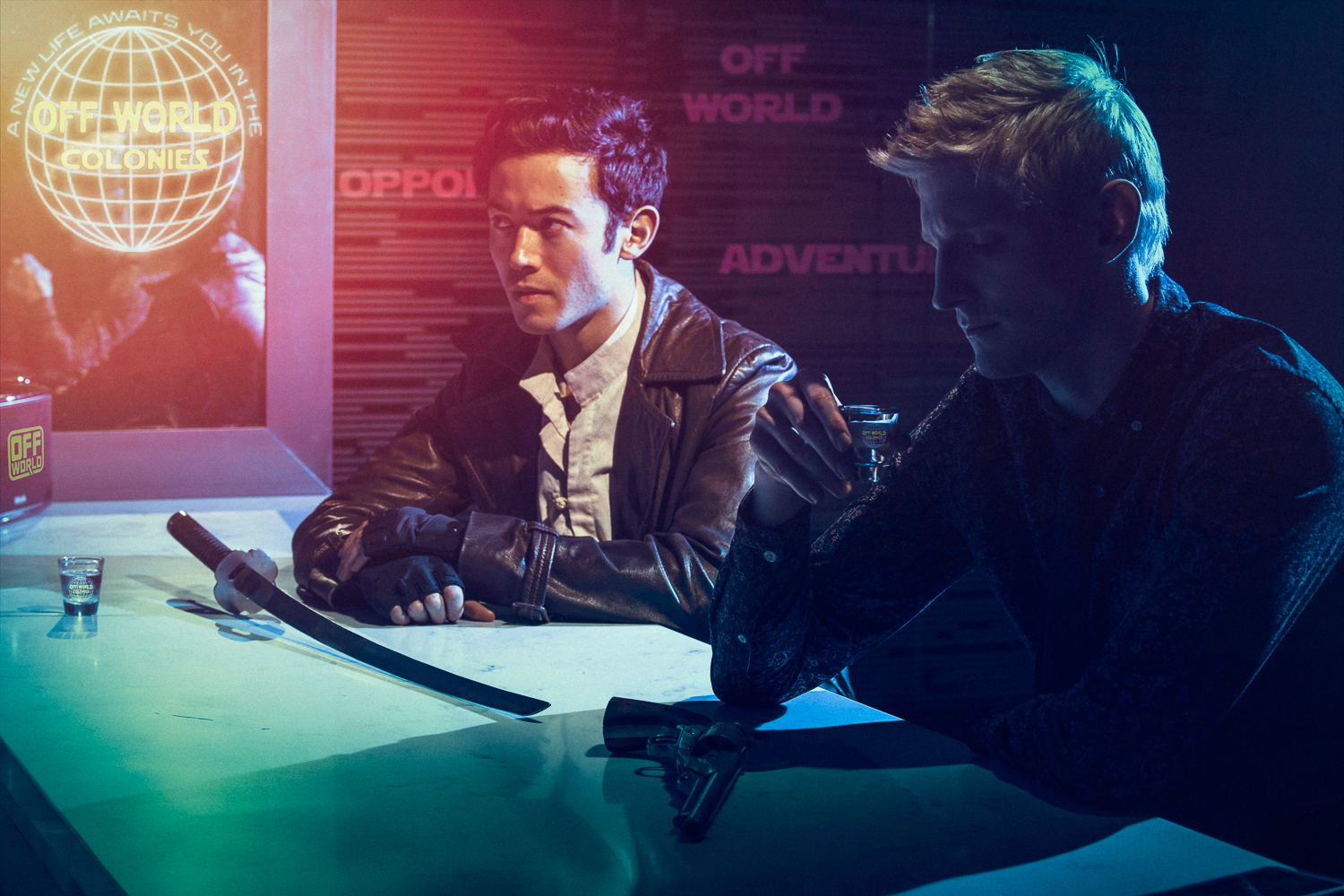
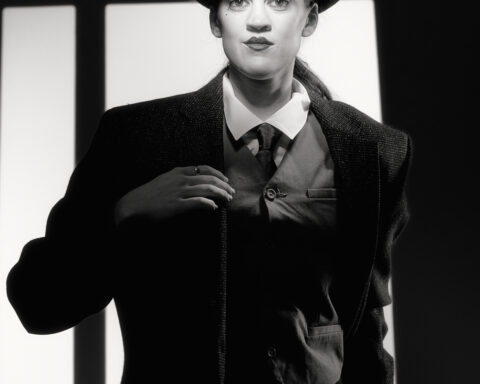
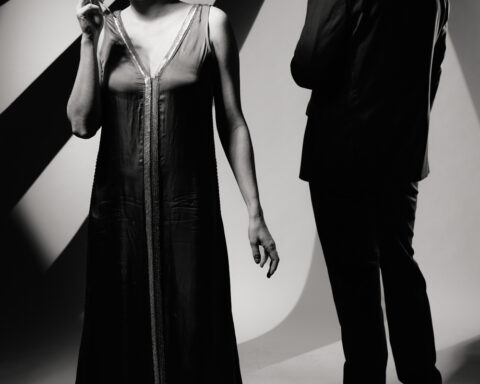
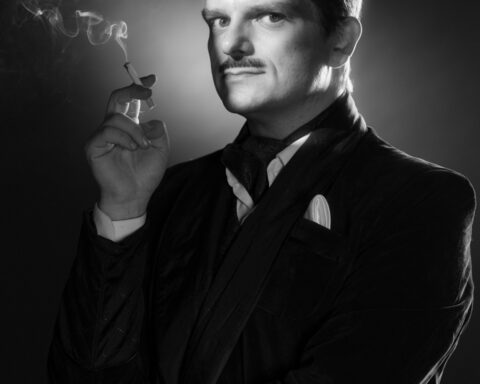
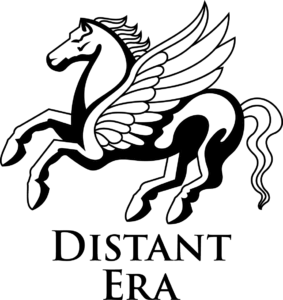
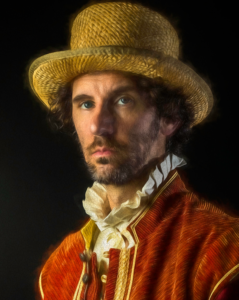
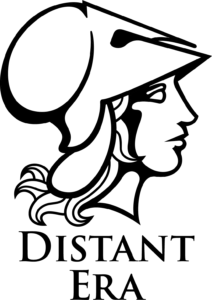
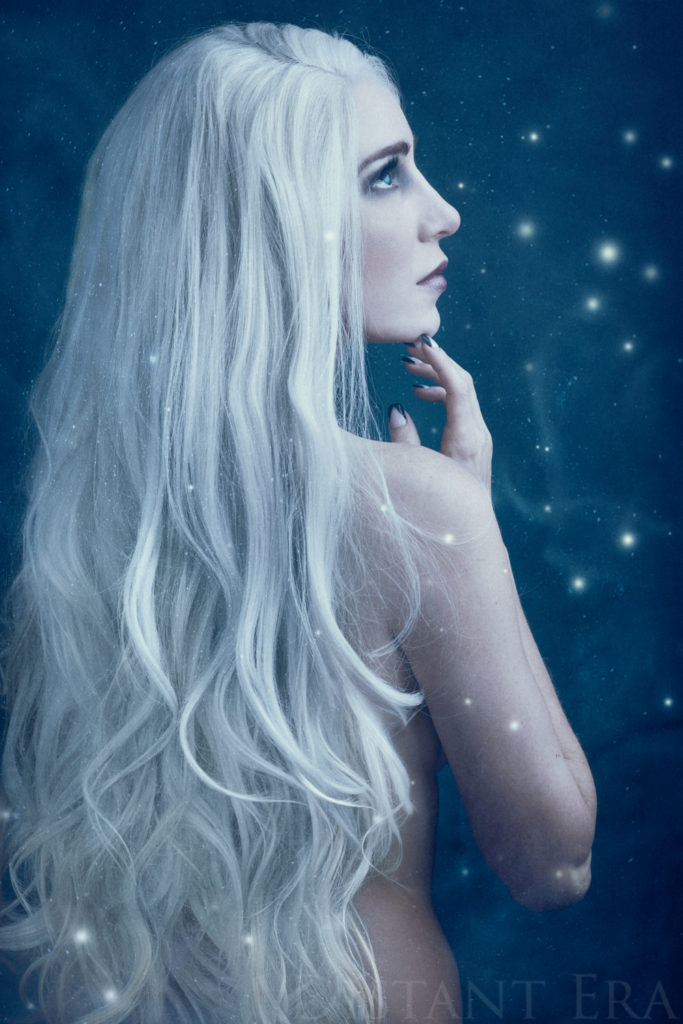
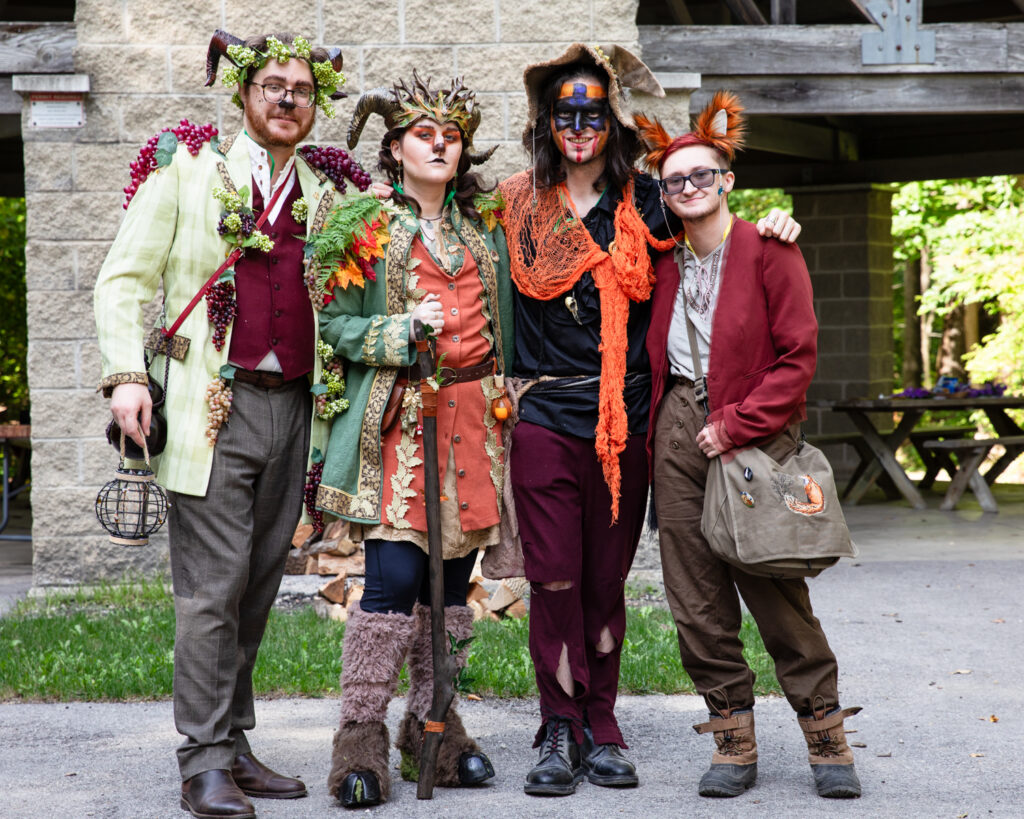
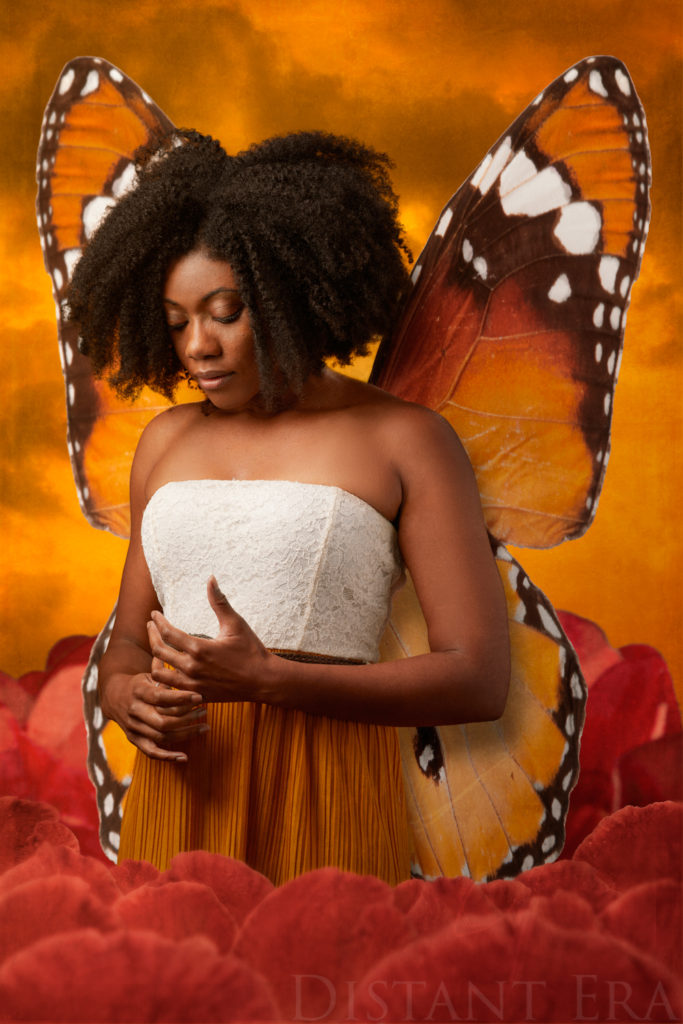
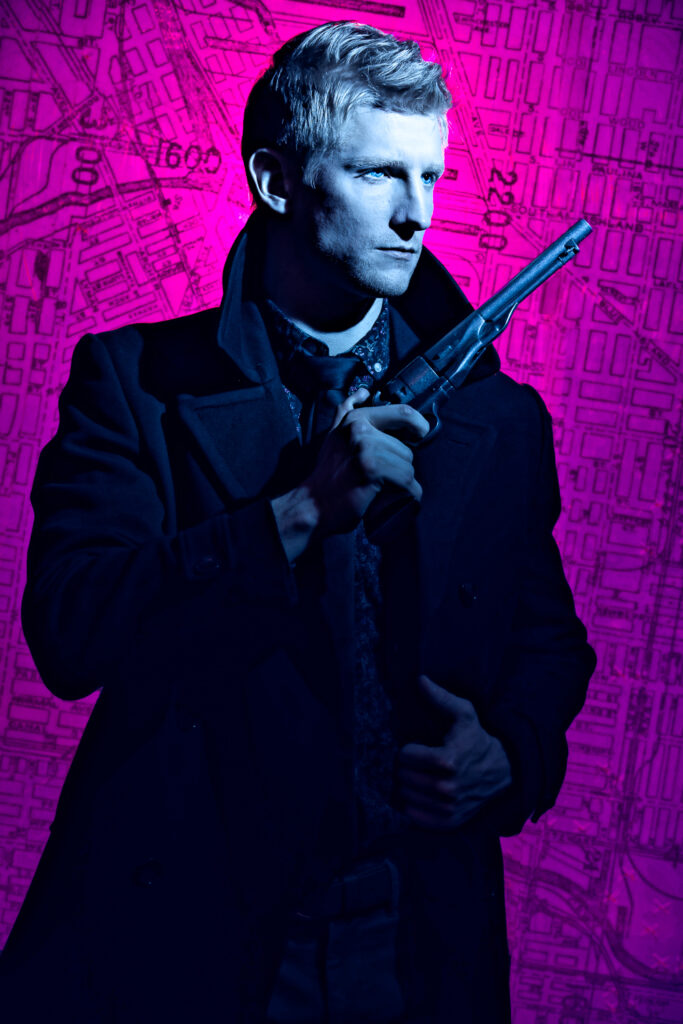
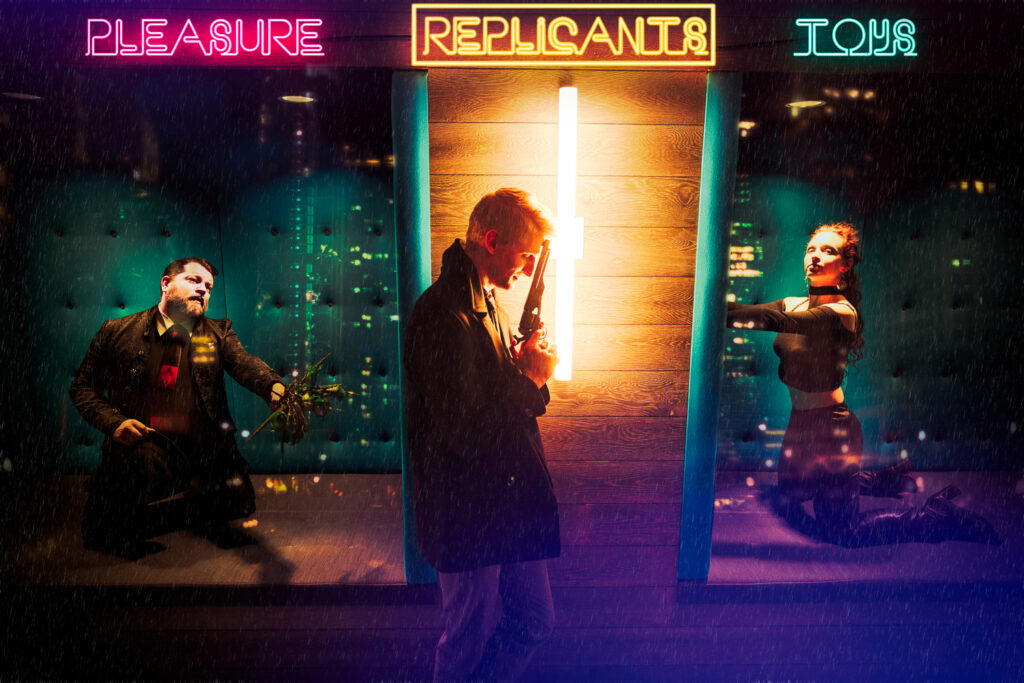
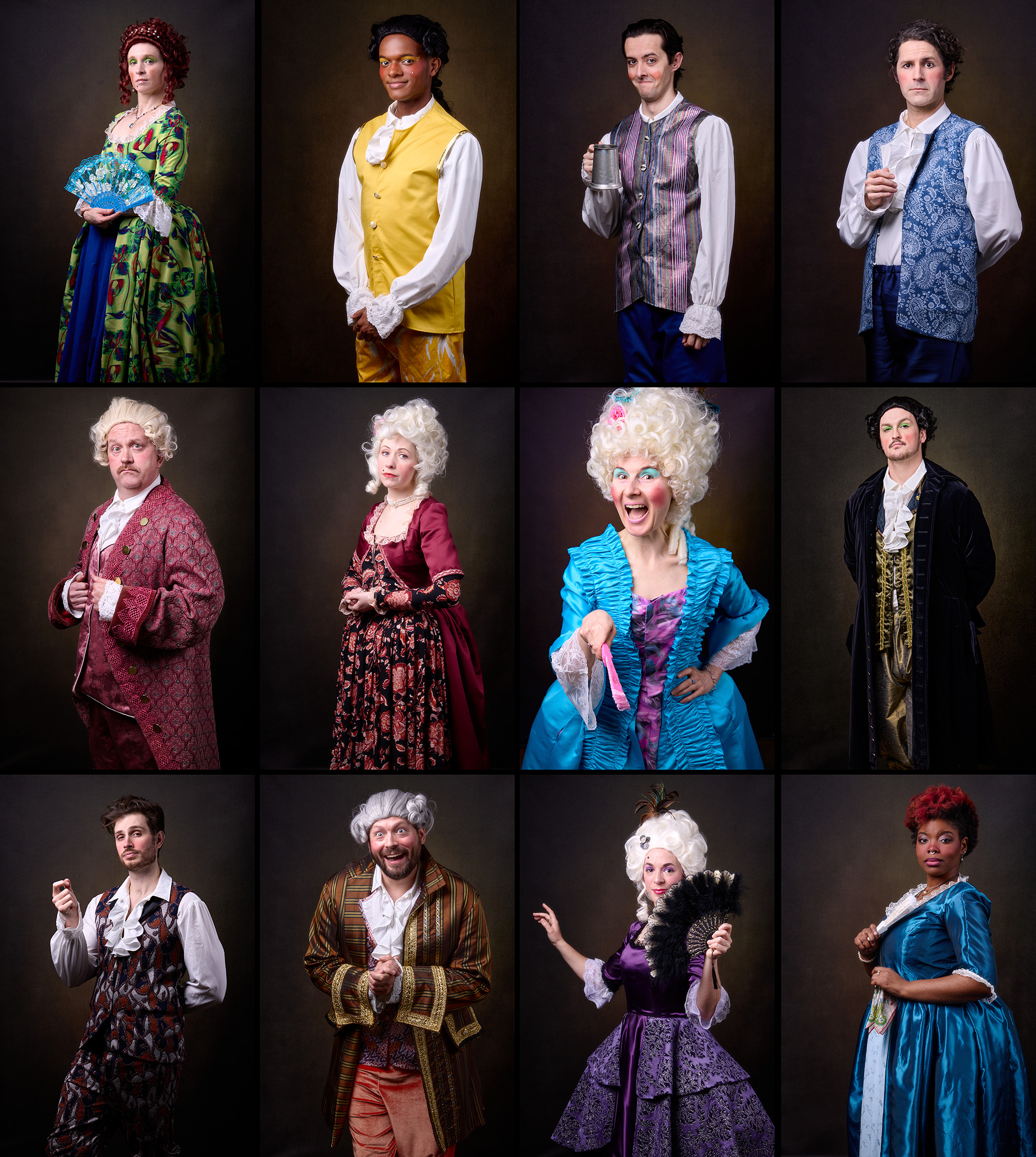
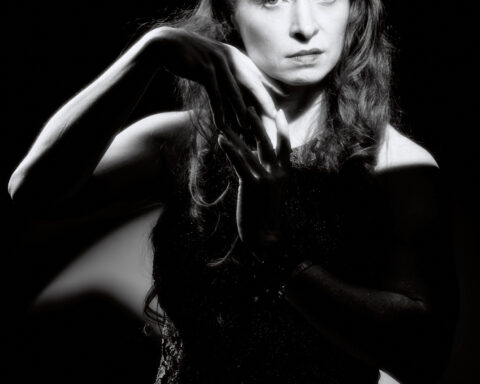
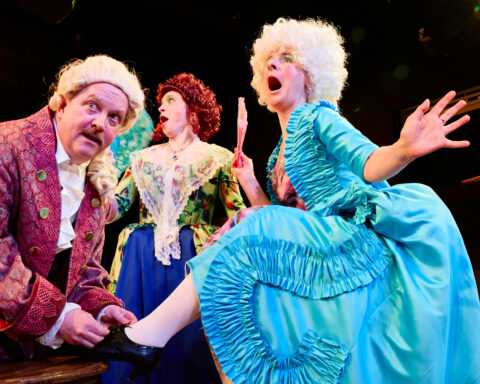
[…] experiments in compositing, portrait effects, colored gels using small, battery-powered flash, and photographing scenes. Our final entry focuses on the characters of the androids, played with cold mechanical grace by […]